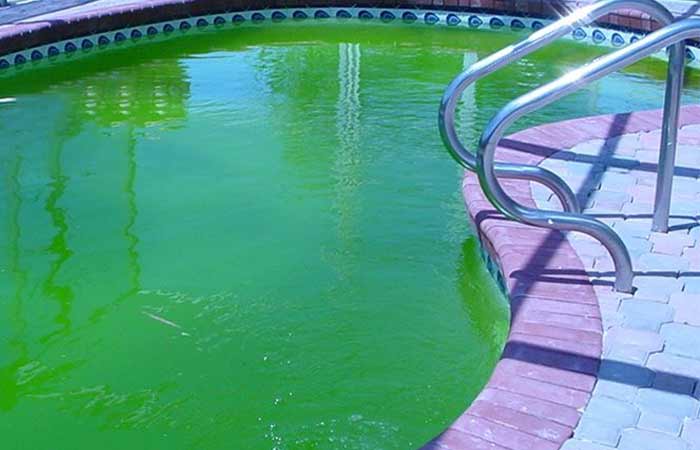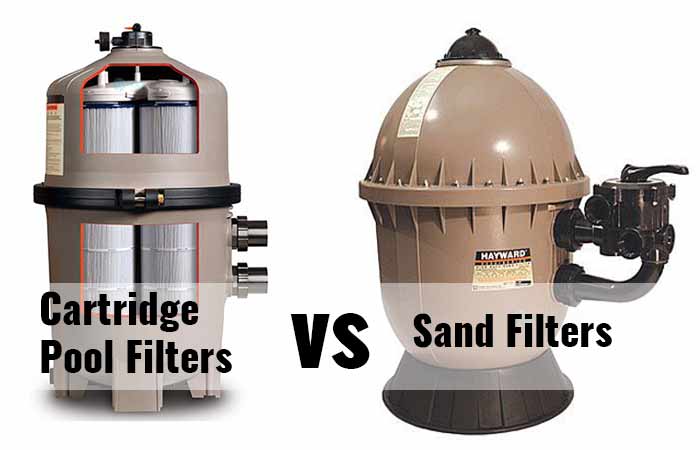Cleaning Pool Tiles
Pool tiles are a crucial part of the pool cleaning process. Keeping them clean not only improves how your pool looks, but how it performs as well. Cleaning and maintaining your pool tiles is an easy task that pays off in both function and beauty.
To clean your pool tiles, put vinegar in a spray bottle then use it to spray the tiles. After 15 minutes, scrub the tiles with a hard-bristled brush before rinsing with clean soft water. Pool tiles can also be cleaned with a pressure washer or muriatic acid.
You should clean the pool tiles at least once every season to keep off algae and moss and to keep them looking good. The right pool chemical balance will also help you keep your pool tiles clean at all times.
Why is it important to clean pool tiles?
You need to clean pool tiles because of the following reasons:
- Prevent the growth of mold and algae on the pool tiles. These bacteria are some of the worst things that you could have growing in your pool. They will not only look bad, but they also cause a lot of damage to your equipment by corroding them or clogging up filters. Cleaning these just once per year should be sufficient enough if you use chlorine tablets daily through an automatic feeder such as Flocare AquaClean .
- Maintain the chemical balance of water in your pool. In order for a chlorine tablet system like AquaClean to work properly, there needs to be some level of TDS (Total Dissolved Solids) present in the water. If you do not have enough chemicals dissolved into the water then these tablets cannot kill harmful bacteria or act against algae growths – resulting in an unhealthy environment where germs can thrive.
- Make your pool look better by removing stains and dirt from tiles.
- Remove calcium deposits.
- Remove organic matter, or any dirt, stains and other debris that has accumulated on the pool tiles. Removing this will prevent calcium from building up and leaving white deposits all over your pool which is unsightly as well as damaging to equipment such as pumps.
For a very busy pool, the cleaning should be more frequent since more dirt is added each time someone goes into the water.
How to Clean Pool Tiles without Draining
You don’t have to drain the water to clean the tiles in your pool. The cleaning methods are as follows:
How to clean pool tile with vinegar
For this procedure, you need white vinegar and a hard-bristled brush. Clean your pool tiles with vinegar as follows:
- Make a solution with equal parts of water and white vinegar. If the tiles are dirty, don’t dilute the vinegar.
- Put the solution in a spray bottle.
- Slightly drain the water in the swimming pool to expose the topmost tiles which are often the ones with the most dirt.
- Spray the tiles with the vinegar solution and wait for 15 minutes.
- Scrub with tiles with the hard-bristled brush then rinse with water.
If the dirt is still there, repeat the process until you get the desired results.
Cleaning pool tile with baking soda
This method is best when you want to prevent algae growth because it does not involve any chemicals.
Use an old toothbrush, baking soda, salt and three gallons of warm water (hot if possible).
The procedure is as follows:
- Mix all ingredients together in one container.
- Scrub each tile gently but thoroughly making sure to remove the dirt accumulated on it.
- Once done, rinse with water from a garden hose equipped with a spray nozzle and let dry naturally before using it again for swimming.
Baking soda isn’t harmful and is favored for this procedure since it kills algae and adds abrasion to the cleaning process.
How to Clean Pool Tiles after Draining
At times, the dirt on the pool tiles goes all the way to the floor of the pool hence the need to drain it for proper cleaning.
How to clean pool tile with muriatic acid
Wear protective gear for this method since muriatic acid can harm you. To use muriatic acid for stripping tiles, follow these steps:
- Dilute one gallon of water with add two cups (16 oz) of acid into an empty five-gallon container then mix thoroughly until there’s no lye left undissolved.
- Pour the solution in a five-gallon bucket and use it with a brush or mop to clean your pool tiles.
- Scrub thoroughly then let stand for 15 minutes.
- Rinse the surface of your swimming pool until there’s no acid left undissolved on its tiles using water from a garden hose equipped with a spray nozzle.
This method is not recommended if you have a vinyl liner because it may cause corrosion. Moreover, handle the solution carefully as it can burn your skin and damage other surfaces like grass or concrete.
The benefits of using this cleaning agent are: speed in removing stains and minerals, cheapness compared to products from the market which do more or less the same job, and deep penetration that removes algae growth at its roots.
How to pressure wash pool tiles
Pressure-washing pool tiles helps provide a thorough result after draining your pool. The procedure is as follows:
- First, buy or rent a pressure washer. The steam washer should have pressure of at least 2000 to 2600 PSI and at least 300°F (149°C).
- Next, remove all the dirt from the pool to ensure you’re not transferring any of that gunk back into your water. You can use a net to capture the loose leaves and other loose dirt.
- Drain the water from the pool to have all the pool tiles exposed.
- Test a small area of the pool by cleaning for 30 seconds then checking it before going to the next step.
- Wash the pool in small sections using the pressure washer. Always use protective gear with this method.
It is also important to maintain tile cleanliness by scrubbing them at least once every two weeks or after heavy rains when contaminants are more likely to accumulate on their surfaces.
Pool tile calcium removal
There are several ways you can remove calcium scaling with the method described below. You need a pumice stone or hard-bristled brush, and a calcium releaser. Follow the steps below:
- Spray a releaser. First, spray a releaser onto the tiles. You can spray it from a spray bottle, or you can pour some into a bowl and dip your brush in there to get more coverage on each tile.
- Rub off calcium deposits with pumice stone.
- Then, use your pumice stone (or hard-bristled brush) to scrub at the affected areas until they are removed. Some cleaners may come with their own brushes that will work better than others for this process.
- Allow the solution you have applied to sit for about half an hour before rinsing it away so that the chemical reaction between water and minerals has time to occur fully.
- Rinse all of the cleanser using fresh water as not doing so could leave behind residue.
Only use pumice stone on hard surfaces such as concrete, plaster and tile and not on softer surfaces such as fiberglass and vinyl pools. For softer surfaces, use a nylon brush.
For calcium deposit releasers, use the ones that are biodegradable, free of acts and non-toxic. Otherwise, you’ll be forced to drain the whole pool after cleaning.
How to clean pool tile grout
Grout is the white substance between the tiles and it’s prone to algae and moss given its soft and spongy nature.
To clean pool tile grout, you need white vinegar, baking soda, a toothbrush and rinsing water. The steps are as follows:
- Make a paste with baking soda and white vinegar. First, make a paste with some baking soda and white vinegar.
- Apply the paste to the grout then wait for 15 minutes.
- Use the toothbrush to scrub away at any algae or moss on the tile grout.
- Once you’re done scouring, make sure that all traces of the paste are rinsed off completely before using the pool again.
These steps can be done both with a drain and undrained pool since baking soda and white vinegar aren’t poisonous.
Tips to Keep Pool Tiles Clean
To keep your pool tiles clean, follow these tips:
- Regularly vacuum the pool. This prevents the accumulation of dirt in the pool.
- Keep pool water chemically balanced. If the pH level deviates too far from normal, it will affect how well your tile can resist stains and discolorations caused by high or low levels of chlorine. Water chemistry is one of the most important factors when trying to keep tiles clean. You should test for these parameters at least twice a week during peak swimming season and once per month otherwise: total alkalinity (TA), calcium hardness (CH) in ppm, free chlorine (FC), cyanuric acid (CYA) in ppm, salt content (% sodium chloride).
- Brush the tiles at the start of every season.
- Use a pool tile cleaner. This will help you keep your tiles clean easily and effortlessly, without over-exerting yourself with scrubbing and brushing.
- Regularly use an acidic water treatment system to remove calcium buildup on the sides of the pool (which can contribute to staining). If this is not done regularly, it could lead to damage or destruction of your tile surfaces by eroding them away particularly if there has been any excessive alkalinity in the water that can cause rapid etching when combined with pH imbalance or inadequate filtration due to lack of proper maintenance.
With these tips, your swimming pool tiles should always look great.







